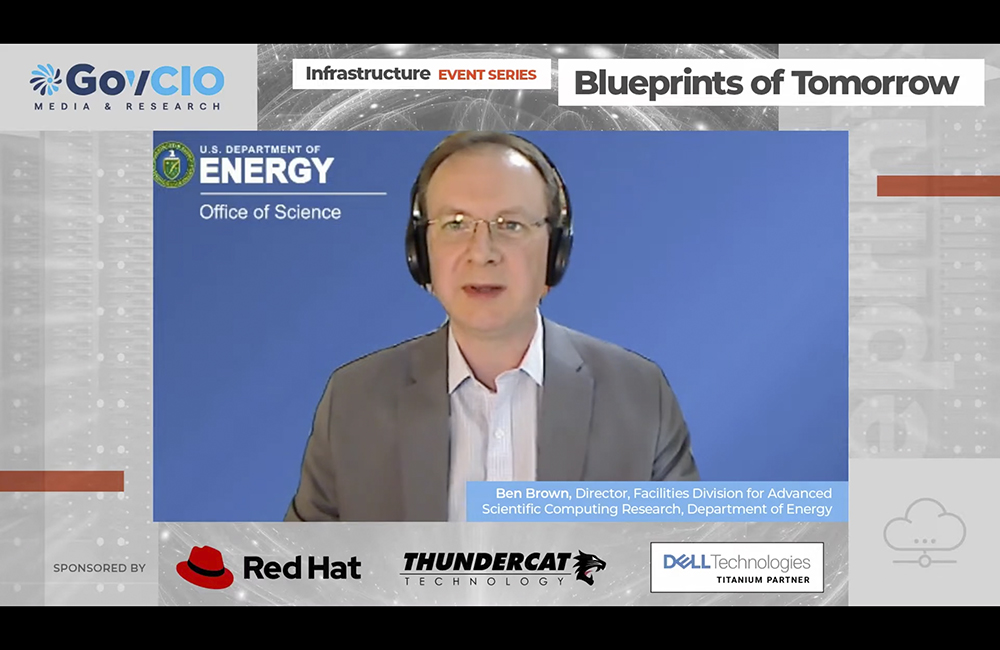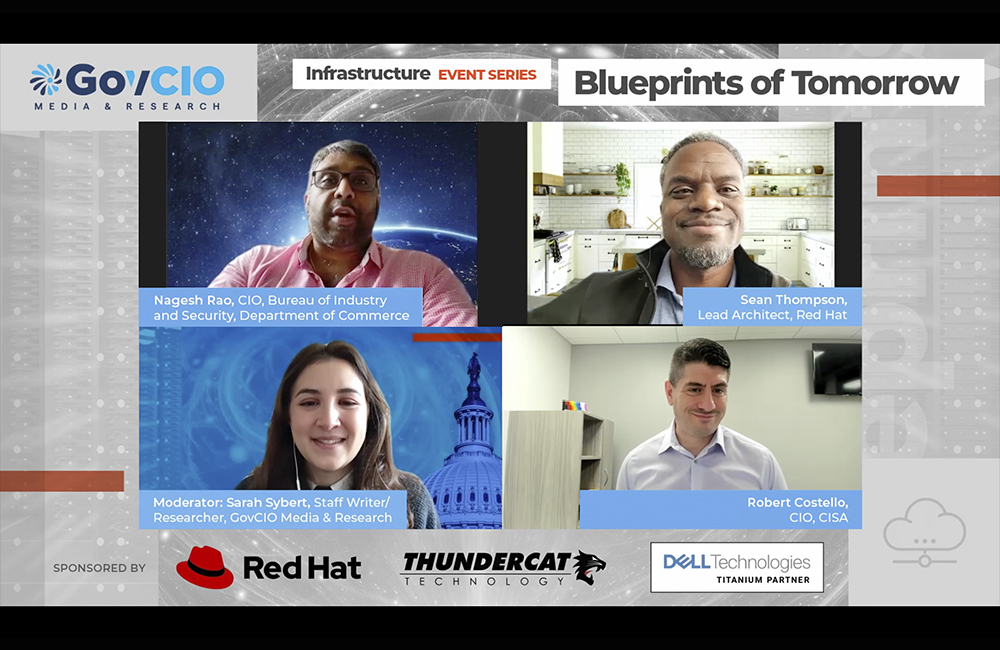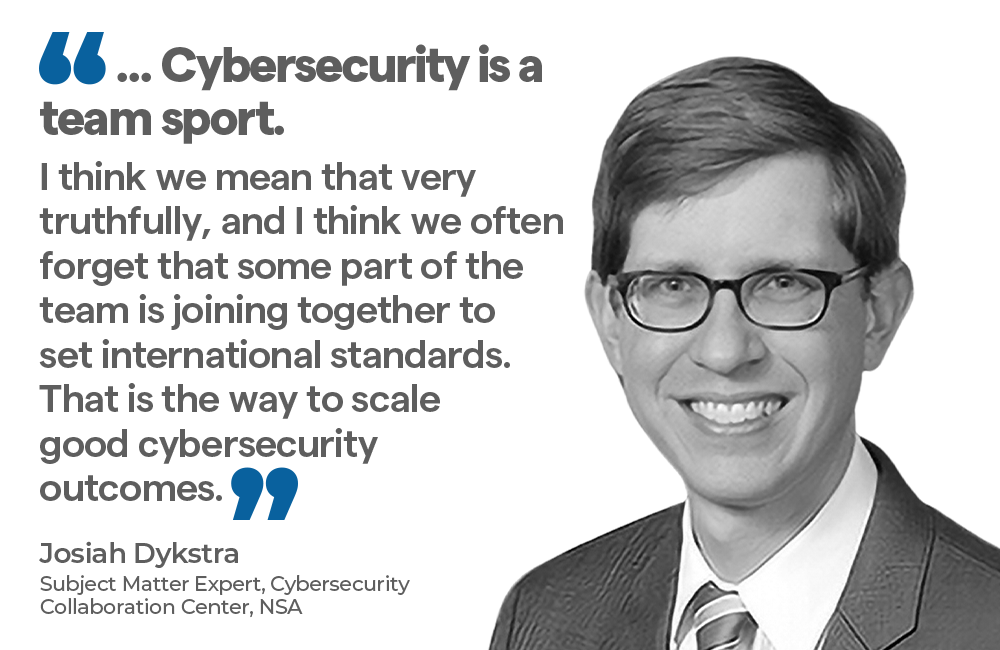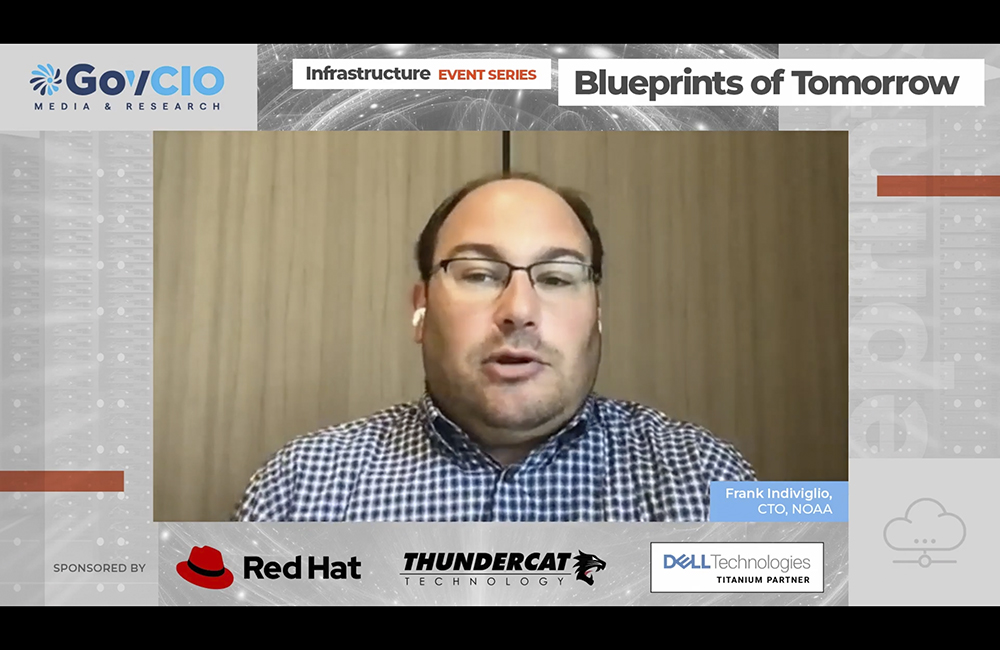5 Takeaways from Blueprints of Tomorrow

Federal IT modernization is a continuous process, and agencies are focusing on the different avenues and strategies they need to pursue to seek improved IT capabilities. Leadership from across civilian and defense agencies highlighted some of these strides during GovCIO Media & Research’s Blueprints of Tomorrow event July 28, 2022.

Strategize data through the lens of business processes

With data a strategic asset, agencies need to consider how to optimize their business processes and workflows, said U.S. Army Enterprise Cloud Management Agency Director Paul Puckett. By focusing on business process first, agencies can build the infrastructure to leverage data most effectively to support mission activities.
A key piece to optimizing business processes through data-driven solutions is in developing a culture around data and information exchange. Department of Energy Advanced Scientific Computing Research Director Ben Brown noted that this is especially important for agencies with a mission around science and research.

Achieve better zero trust by building a security-first culture

Even though the Department of Commerce’s Bureau of Industry Security (BIS) is almost 100% cloud native and leveraging the cloud for increased cybersecurity, technological solutions are not a silver bullet. Everyone needs to play a role in building security and resiliency, BIS CIO Nagesh Rao said.
Training is key for developing a cyber-first workforce. U.S. Navy Principal Cyber Advisor Chris Cleary is pushing training efforts to build awareness and developing a culture around security.

Tighten collaboration and information-sharing for greater resiliency and security

As ransomware incidents and nation-state sponsored threats continue to rise, national security agencies have realized that they need to build stronger lines of communication and data-sharing to build resilient security postures. National Security Agency (NSA) Cybersecurity Collaboration Center Subject Matter Expert Josiah Dykstra emphasized how his agency is driving these efforts by building a community with more than 200 partners to increase information exchange.
Defense agencies are also providing resources for key private-sector partners. NSA, for instance, launched the Protective Domain Name System and processed more than 3 billion queries and blocked more than 6 million malicious domains in the program’s pilot.

Leverage advanced technologies to enhance data-driven decision-making

The volume of data produced and captured grows exponentially, capabilities like high-performance computing (HPC) can help process and make sense of the data in more meaningful ways. Other automated capabilities, like artificial intelligence and machine learning, can also help.

Look beyond customization and move toward standardization

Agencies with limited budgets are looking to standardized solutions to help them move modernization along. While customized offerings may help, it’s not always within financial reach for certain agencies, BIS CIO Nagesh Rao said.
Instead, work off a general standard baseline that most IT teams operate on then build off from that, Rao said. Unique customizations can hinder interoperability and create more problems sometimes.




